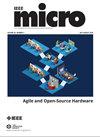Addressing Gap between Training Data and Deployed Environment by On-Device Learning
IF 2.8
3区 计算机科学
Q2 COMPUTER SCIENCE, HARDWARE & ARCHITECTURE
引用次数: 0
Abstract
The accuracy of tinyML applications is often affected by various environmental factors, such as noises, location/calibration of sensors, and time-related changes. This article introduces a neural network based on-device learning (ODL) approach to address this issue by retraining in deployed environments. Our approach relies on semi-supervised sequential training of multiple neural networks tailored for low-end edge devices. This article introduces its algorithm and implementation on wireless sensor nodes consisting of a Raspberry Pi Pico and low-power wireless module. Experiments using vibration patterns of rotating machines demonstrate that retraining by ODL improves anomaly detection accuracy compared with a prediction-only deep neural network in a noisy environment. The results also show that the ODL approach can save communication cost and energy consumption for battery-powered Internet of Things devices.通过设备上学习解决训练数据与部署环境之间的差距
tinyML应用程序的准确性经常受到各种环境因素的影响,例如噪声、传感器的位置/校准以及与时间相关的变化。本文介绍了一种基于设备学习(ODL)的神经网络方法,通过在部署环境中进行再训练来解决这个问题。我们的方法依赖于为低端边缘设备量身定制的多个神经网络的半监督顺序训练。本文介绍了其算法及其在由树莓派Pico和低功耗无线模块组成的无线传感器节点上的实现。利用旋转机器的振动模式进行的实验表明,在噪声环境下,与仅预测的深度神经网络相比,ODL再训练提高了异常检测的精度。结果还表明,ODL方法可以为电池供电的物联网设备节省通信成本和能耗。
本文章由计算机程序翻译,如有差异,请以英文原文为准。
求助全文
约1分钟内获得全文
求助全文
来源期刊

IEEE Micro
工程技术-计算机:软件工程
CiteScore
7.50
自引率
0.00%
发文量
164
审稿时长
>12 weeks
期刊介绍:
IEEE Micro addresses users and designers of microprocessors and microprocessor systems, including managers, engineers, consultants, educators, and students involved with computers and peripherals, components and subassemblies, communications, instrumentation and control equipment, and guidance systems. Contributions should relate to the design, performance, or application of microprocessors and microcomputers. Tutorials, review papers, and discussions are also welcome. Sample topic areas include architecture, communications, data acquisition, control, hardware and software design/implementation, algorithms (including program listings), digital signal processing, microprocessor support hardware, operating systems, computer aided design, languages, application software, and development systems.
 求助内容:
求助内容: 应助结果提醒方式:
应助结果提醒方式:


